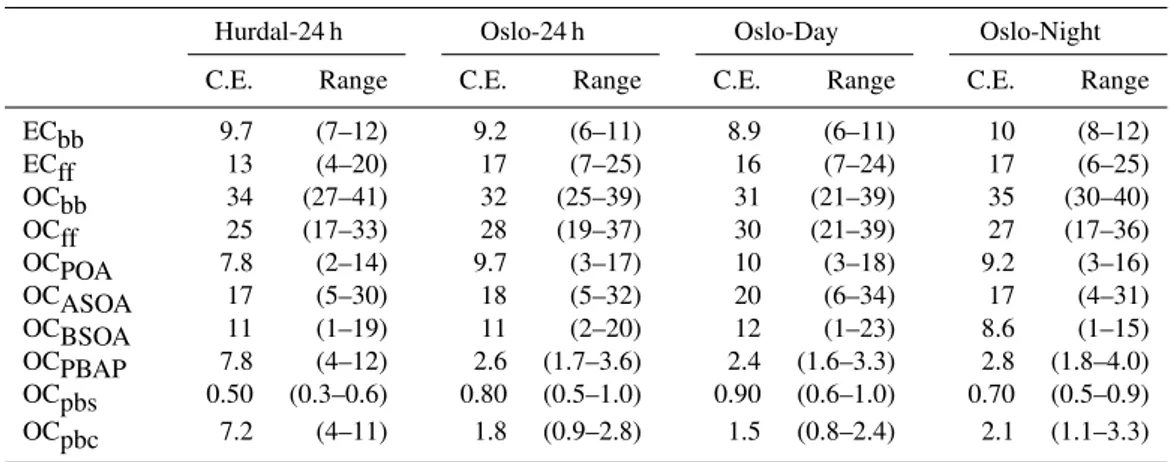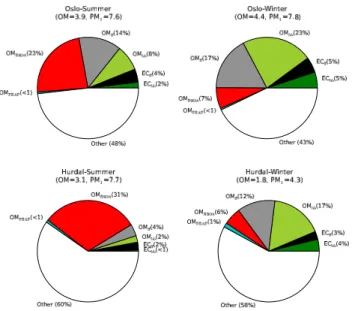Source apportionment of the carbonaceous aerosol in Norway – quantitative estimates based on <sup>14</sup>C, thermal-optical and organic tracer analysis
Texto
Imagem




Documentos relacionados
The most abundant elements from PIXE analysis were S, Si, K, Fe, Ca, and Al, while the major emissions sources associated with these ele- ments were industry, wind-blown soil,
These are: elemental carbon from combustion of biomass (EC bb ) and fossil fuel (ECff), organic carbon from combus- tion of biomass (OC bb ), fossil fuel (OCff), primary
The data used in this analysis (5 March–30 December 2013) were obtained using an Aerosol Chemical Speciation Moni- tor (ACSM), deployed at the urban background site in North
In this study, we analyzed number concentration and size distribution of aerosol particles, together with the mass concentration and chemical composition of UFPs and PM 1
The residential sector has been identified as a major cause of uncertainty in estimates of CO, NMVOC, and carbonaceous aerosol emissions in Asia (Streets et al., 2003a), because of
Measurements of aerosol chemical composition and aerosol optical depth in the Nepal Himalaya have clearly shown the build up of aerosols in the pre-monsoon season during the winter
trends. Nitrate was observed to peak in early morning, during the rush hours. The peak in nitrate concentration in the morning was most pronounced when the concentrations were large
In this context, the present work focuses on characterizing the sources of fine carbonaceous aerosols, by using the 14 C method and comparing it to results from other

